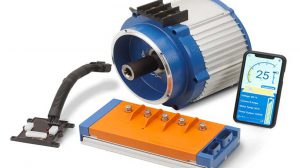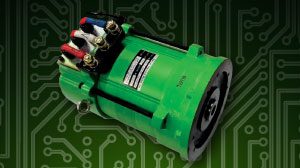By Matt Vallez
Upon returning to the garage where his golf car has been stored for several months, the owner plugs in his automatic charger and finds it will not come on. He did not feel comfortable leaving it plugged in for the entire off season, but now the battery charger won’t come on. This is one of the most common problems with electric golf cars left sitting for several months without a charger connected to them. They appear to be dead; next a technician is called to check it out. The typical technician will check the car over and tell customers the batteries or the charger is the problem, transport the car back to the shop where they have a method of charging batteries that are under the critical 80% discharge level (70% nominal voltage level), and or checking the charger.
There are still many automatic chargers out there in use today that will not come on until there is at least 70% nominal charge voltage in the battery pack. That is how they were designed; this keeps them from working if there are major issues within the system. That is why they need to have a 70% nominal charge voltage to start; it was a designed safety feature. The nominal pack voltage of a 36 volt system fully charged is around 38 volts. A 48 volt battery pack fully charged would be around 52 volts. On the low end 70% (voltage) of a 36 volt pack would be close to 25 volts and a 48 volt pack at 70% (voltage) would be close to 33 volts.
The good news is that in the last five years charger technology has improved to the point where most automatic chargers only need to detect one or two volts to start a charge cycle. Also many chargers are now built with multi fail safe systems. Now if the relay fails the charger will not continue to run until unplugged as some older chargers did. The problem with wet cell lead acid batteries is they discharge at a rate of 4% per week. In higher temperatures the discharge rate is even quicker. That means 16% per month. If you do the math it will only take two months and you are below the 70% nominal voltage. Newer charger technology also allows maintenance charging for storage.
I will give you a couple of solutions to fix this problem, in order of expense. One, you can add a relay by-pass switch to an existing automatic charger (Ferro-resonant only) see attached diagram (DIAGRAM HERE). Two, you can take an existing manual (timer) charger 36 or 48 it makes no difference. Put a SB50 amp DC plug on the end. This will allow you to use with any Nivel modular DC cords we offer to fit any current DC receptacle, and a lot of old ones also. Connect the manual charger using the appropriate Nivel DC cord set and let the pack charge 2 or 3 hours which will allow pack voltage to rise to a level where the automatic timer will accept. Before completing the charge cycle, check battery cell water level and you should be good to go. A general rule of thumb is to charge the batteries every 30 to 45 days to prevent over discharging to start with. The final option is to switch to AGM batteries which have a slower self discharge rate of 1% per month. This way the car could sit for many months before needing additional help charging.
In any case I believe a good idea is to take an old manual charger and have it ready to use in these situations. A technician can put the manual charger on the car, go to lunch or another call and circle back to check on the progress. Most of the time that is all that is needed batteries are fine and so is the automatic charger. Good luck.










